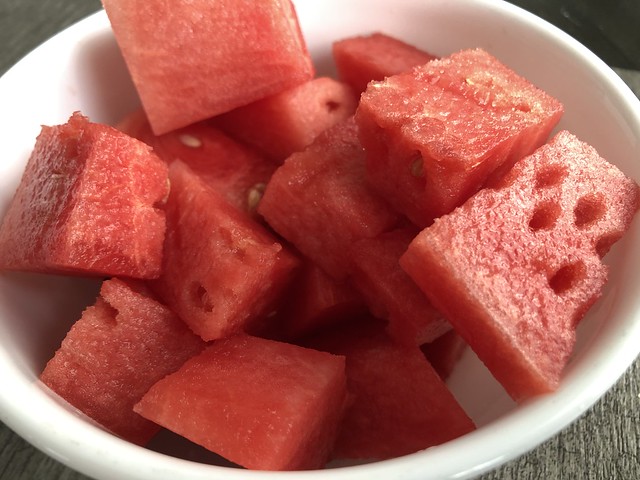You are here
How To Get The Most Nutritional Value Out Of Watermelon
Watermelon is hands down, our family's favourite summertime fruit - how can you not love refreshingly cold cubes of sugary crisp watermelon?
Not only is watermelon packed with thirst-quenching water and natural sweetness, it's an excellent source of two powerful antioxidants: lycopene, and beta carotene.
Lycopene is what gives watermelon its rich, red colour, and is associated with reduced risk of developing macular degeneration, prostate challenges, and a variety of other degenerative conditions.
Beta carotene is another powerful antioxidant that can help to protect your cells against damage by free radicals. If you are eating adequate amounts of healthy fat and are in good overall health, your body can convert beta carotene into vitamin A, which plays a critical role in keeping your immune system healthy.
A study conducted by the U.S. Department of Agriculture indicates that the lycopene and beta carotene content of watermelon increases when watermelon is stored for several days at room temperature after being picked from the ground.
Researchers measured the lycopene and beta carotene content of different types of three popular seeded and seedless types of watermelon.
The watermelons were stored in coolers that were set at three different temperatures: 41 degrees fahrenheit (5 C), 55 degrees fahrenheit (13 C), and 70 degrees fahrenheit (21 C).
After fourteen days, the following results were recorded:
- Lycopene content rose by an average of 20 percent in watermelons that were left uncut at room temperature
- Beta carotene content rose by an average of 100 percent in watermelons that were left uncut at room temperature
- Watermelons that were left uncut at room temperature had thinner rinds than those that were stored at colder temperatures, a cardinal sign of ripening
- Watermelons that were stored at below-room temperature levels did not experience any gains in their lycopene and beta carotene levels
Clearly, watermelon becomes more nutritious if you allow it to ripen for a few days in a whole, uncut state at room temperature.
Cut watermelon should not be stored at room temperature, as it will start to go bad after a day or two.
When we buy watermelon, we let it sit on our kichen counter for a few days until we are ready to eat it. We then cut it into pieces, eat what we can right away, and then store whatever is left in an airtight container in the refrigerator, to be eaten over the next day or two.
If you use a juicer to make watermelon juice, wash the outer green skin of the watermelon thoroughly and push it through the feeding chamber of your juicer along with the red flesh of the watermelon. This will provide your body with chlorophyll, another health promoting nutrient.







